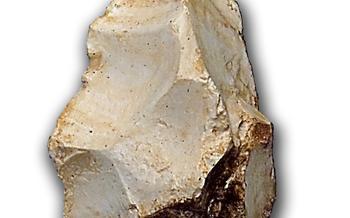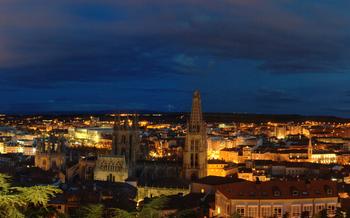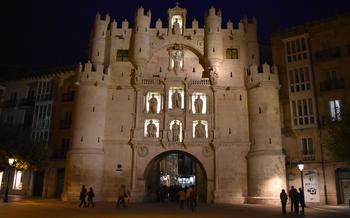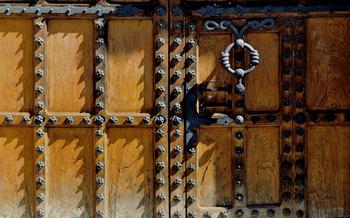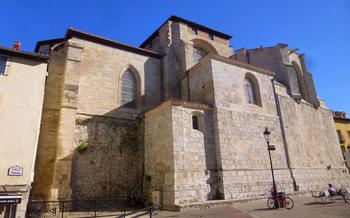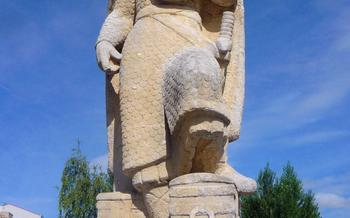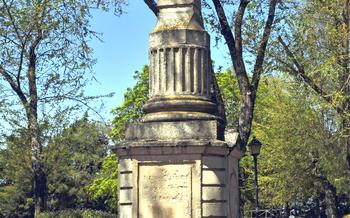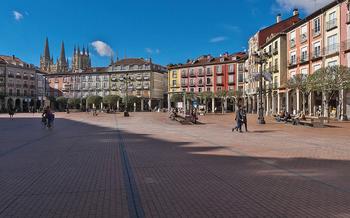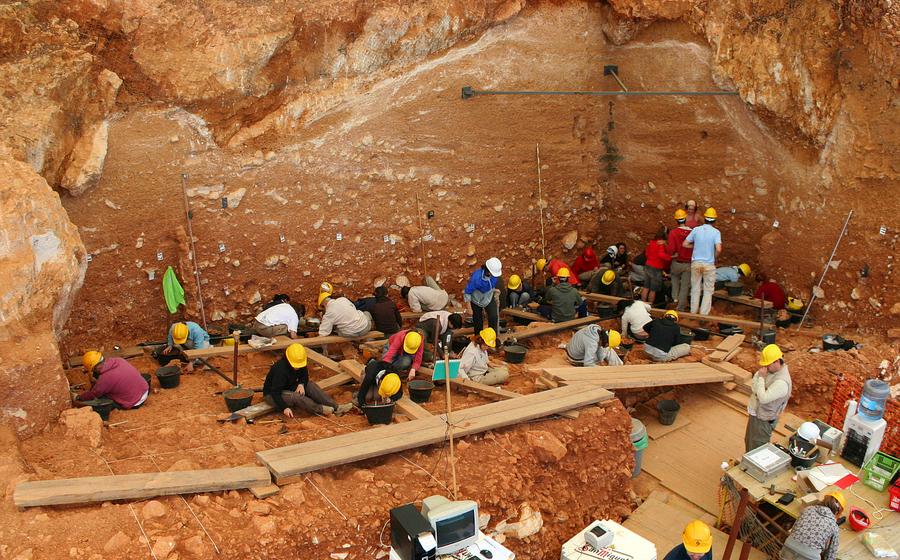
Sierra de Atapuerca
- The Atapuerca Mountains: A Natural Wonderland
- Hiking Trails and Outdoor Activities
- Breathtaking Views and Photo Opportunities
- The Atapuerca Experience Center: An Immersive Journey
- Archaeological Sites: A Window into the Past
- The Museum of Human Evolution: Unraveling Our Origins
- The Atapuerca Foundation: Preserving and Educating
- Guided Tours: A Deeper Understanding
- Local Cuisine: A Taste of Burgos
- Accommodations: Rest and Relaxation
- Transportation: Getting Around
- Safety and Precautions: Exploring Responsibly
- Photography Tips: Capturing the Beauty
- Family-Friendly Activities: Engaging the Little Explorers
- Off-the-Beaten-Path Gems: Exploring Beyond the Main Sites
- Insider Tip: Unforgettable Experiences
The Atapuerca Mountains: A Natural Wonderland
The Sierra de Atapuerca is not only a treasure trove of archaeological wonders but also a stunning natural wonderland. The mountains themselves are a sight to behold, with their rugged peaks, deep valleys, and towering cliffs. The region is home to a diverse array of geological formations, including karst landscapes, caves, and canyons.
The Atapuerca Mountains are also home to a rich and diverse flora and fauna. The region is known for its unique plant species, including the Atapuerca daisy and the Atapuerca poppy. The mountains are also home to a variety of animals, including vultures, eagles, and wild boar.
Hiking Trails and Outdoor Activities
The Atapuerca Mountains offer a variety of hiking trails for visitors of all levels. The trails range from easy walks to challenging climbs, and they offer stunning views of the surrounding countryside. Visitors can also enjoy other outdoor activities in the mountains, such as mountain biking, rock climbing, and spelunking.
Breathtaking Views and Photo Opportunities
The Sierra de Atapuerca offers visitors breathtaking views of the surrounding countryside. The mountains are particularly beautiful at sunset, when the sky is ablaze with color. Visitors can capture stunning photos of the mountains, the valleys, and the villages that dot the landscape.
The Atapuerca Experience Center: An Immersive Journey
Housed in a modern and interactive facility, the Atapuerca Experience Center provides visitors with an immersive experience that brings the region's rich history to life. Through engaging exhibits, virtual reality experiences, and educational workshops, the center offers a comprehensive journey through human evolution.
Interactive displays showcase the latest discoveries and research findings from the Sierra de Atapuerca, allowing visitors to explore the fascinating world of our ancestors. Virtual reality experiences transport visitors back in time, offering a glimpse into the lives and challenges of early hominids. Guided tours led by experienced professionals provide in-depth insights into the significance of the region's archaeological treasures.
The center also features a range of educational programs and workshops for students and visitors of all ages. These programs aim to foster a deeper understanding of human evolution and the importance of preserving our cultural heritage. Visitors can participate in hands-on activities, such as fossil casting and DNA extraction, which provide a fun and interactive learning experience.
With its state-of-the-art facilities and engaging programs, the Atapuerca Experience Center is an essential destination for anyone interested in exploring the origins of humankind. The center offers a unique and immersive experience that leaves visitors with a profound understanding of our evolutionary journey.
Archaeological Sites: A Window into the Past
The Sierra de Atapuerca is home to several significant archaeological sites that have yielded remarkable discoveries about human evolution. Among these sites are:
-
Gran Dolina: This site is renowned for its hominid fossil discoveries, including the remains of Homo antecessor, an early ancestor of humans who lived in the region around 2 million years ago.
-
Sima de los Huesos: This chamber contains the remains of at least 28 individuals of Homo heidelbergensis, who lived in the Sierra de Atapuerca around 400,000 years ago. The site offers a unique glimpse into the social and cultural behavior of this ancient species.
-
Cueva Mayor: This cave features evidence of human habitation dating back to the Middle Paleolithic era. It contains impressive cave art, including hand stencils and depictions of animals, which provide insights into the artistic and symbolic expressions of our ancestors.
Visitors to the Sierra de Atapuerca can explore these archaeological sites through guided tours, which offer a deeper understanding of the significance of the discoveries and the ongoing research conducted in the region. Access to the sites is restricted to ensure their preservation, and visitors are advised to book tours in advance.
The Museum of Human Evolution: Unraveling Our Origins
Nestled in the heart of Burgos, the Museum of Human Evolution stands as a testament to the remarkable discoveries made in the Sierra de Atapuerca. Within its walls, visitors embark on a captivating journey through the annals of human evolution, tracing our lineage back to the earliest hominids.
The museum's extensive collection boasts an array of hominid fossils and artifacts, each piece a tangible link to our ancient past. These precious relics, meticulously preserved and displayed, provide a glimpse into the lives and adaptations of our ancestors. Interactive displays and educational resources further enhance the experience, bringing the complexities of human evolution to life.
Through engaging exhibits, the museum delves into the intricate tapestry of human genetics, showcasing the remarkable diversity that characterizes our species. Immerse yourself in the latest scientific findings, exploring the genetic underpinnings of human traits and the evolutionary forces that have shaped our existence.
Conveniently located in the city center, the Museum of Human Evolution is easily accessible and offers an enriching experience for visitors of all ages. Step into the realm of human origins and discover the fascinating story of our evolutionary journey.
The Atapuerca Foundation: Preserving and Educating
The Atapuerca Foundation is a vital organization dedicated to preserving the exceptional cultural and historical heritage of the Sierra de Atapuerca. Its primary mission is to safeguard the archaeological sites and their invaluable discoveries while promoting research, conservation, and education.
The foundation plays a pivotal role in organizing and conducting ongoing excavations, employing a team of highly skilled archaeologists and researchers. Their tireless efforts have unearthed an extraordinary wealth of hominid fossils, stone tools, and other artifacts, shedding new light on human evolution and our ancestral origins.
Recognizing the importance of education and outreach, the Atapuerca Foundation offers a range of educational programs and workshops for students, researchers, and the general public. These programs aim to foster a deeper understanding of human evolution, archaeology, and the significance of the Sierra de Atapuerca.
Visitors to the region can participate in guided tours led by experienced archaeologists, gaining exclusive insights into the scientific discoveries and ongoing research. These tours provide an immersive and educational experience, allowing participants to connect with the rich history and heritage of the Sierra.
The Atapuerca Foundation's unwavering commitment to research, conservation, and education ensures that the legacy of the Sierra de Atapuerca continues to inspire and educate generations to come. By supporting the foundation's work, individuals can contribute to preserving this invaluable heritage and promoting a greater understanding of our human origins.
Guided Tours: A Deeper Understanding
Visiting the Sierra de Atapuerca with a guided tour is an enriching experience that allows visitors to delve deeper into the region's significance and history. Professional guides, who are experts in archaeology and human evolution, lead these tours, providing invaluable insights and explanations that bring the sites to life.
Guided tours typically cover the key archaeological sites, including Gran Dolina, Sima de los Huesos, and Cueva Mayor, offering a comprehensive overview of the region's discoveries. Guides share detailed information about the hominid fossils found, the significance of the findings, and the ongoing research conducted at the sites.
Booking a guided tour offers several advantages. Tours are often tailored to specific interests, whether it's archaeology, paleontology, or human evolution. Guides can customize the tour to suit the pace and preferences of the group, ensuring that everyone has a fulfilling experience.
Guided tours are available in various languages, making them accessible to visitors from different countries. The tours typically include transportation to and from the sites, eliminating the need for visitors to arrange their own transportation.
Prices for guided tours vary depending on the duration, group size, and inclusions. It's advisable to book in advance, especially during peak tourist seasons, to secure a spot and avoid disappointment.
Local Cuisine: A Taste of Burgos
Burgos is a culinary paradise, offering a rich and diverse gastronomy that showcases the region's unique flavors and traditions. From hearty stews to succulent roasts, the local cuisine is a reflection of the province's agricultural heritage and its close ties to the land.
Must-try dishes include the Olla Podrida, a hearty stew made with chickpeas, meats, and vegetables, and the Lechazo Asado, a roasted suckling lamb that is a specialty of the region. Burgos is also famous for its morcilla, a type of blood sausage, and its Queso de Burgos, a soft, creamy cheese that is often served with honey or membrillo, a quince paste.
For a taste of local wines, be sure to sample the Ribera del Duero, a red wine produced in the region, and the Arlanza, a white wine with a fruity aroma. Burgos is also home to a variety of local products, such as honey, cheese, and cured meats, which can be found in local markets and shops.
To fully immerse yourself in the local culinary scene, visit one of the many traditional restaurants in Burgos. These establishments often offer set menus that showcase the region's specialties, allowing you to sample a variety of dishes at a reasonable price.
For a unique dining experience, head to one of the many mesones, or traditional inns, that dot the countryside. These establishments often offer rustic accommodations and serve hearty, home-cooked meals made with local ingredients.
Accommodations: Rest and Relaxation
Nestled amidst the stunning landscapes of the Sierra de Atapuerca, a range of accommodation options await weary travelers. From cozy hotels and guesthouses to charming rural cottages, there's something to suit every taste and budget.
For those seeking modern comforts, hotels in the nearby towns of Burgos and Ibeas de Juarros offer convenient access to the Sierra's attractions. These establishments typically provide amenities such as comfortable rooms, private bathrooms, and on-site restaurants.
For a more rustic experience, rural cottages and guesthouses provide a tranquil escape immersed in nature. These accommodations often feature charming stone exteriors, cozy interiors, and private gardens, offering a peaceful retreat after a day of exploration.
Prices for accommodation vary depending on the type, location, and amenities offered. Budget-conscious travelers can find basic guesthouses and hostels starting at around €20 per night, while those seeking a more luxurious experience can opt for four-star hotels with rates ranging from €80 to €120 per night.
To ensure a comfortable and hassle-free stay, it's advisable to book your accommodation in advance, especially during peak tourist seasons. Online booking platforms and local tourist offices can assist you in finding the best deals and securing your preferred choice.
Transportation: Getting Around
Getting to the Sierra de Atapuerca is relatively easy, with several transportation options available. If you prefer public transportation, regular buses run from Burgos city to the nearby town of Atapuerca. The journey takes about an hour, and buses depart multiple times daily.
For those who prefer the flexibility of their own vehicle, car rental services are available in Burgos. The drive to Atapuerca takes around 45 minutes, and the route is well-marked. Ample parking is available near the Atapuerca Experience Center and archaeological sites.
While exploring the Sierra, you may encounter some restricted areas for ongoing excavations or safety reasons. Please follow the signage and instructions provided to ensure a safe and respectful visit.
Safety and Precautions: Exploring Responsibly
Venturing into the Sierra de Atapuerca requires a sense of responsibility towards both the natural and cultural heritage it holds. Safety should always be a priority, especially when exploring caves and archaeological sites. Respecting the environment is paramount, so please avoid littering and damaging any vegetation or rock formations.
To ensure a safe and enjoyable visit, follow these guidelines:
- Stick to designated trails and avoid venturing into restricted areas.
- Wear appropriate clothing and sturdy footwear suitable for uneven terrain.
- Carry a flashlight or headlamp when exploring caves, as some areas may be poorly lit.
- Be mindful of slippery surfaces and uneven ground, especially in wet conditions.
- Stay hydrated by carrying sufficient water, particularly during hot weather.
- Inform others about your planned route and expected return time.
- If you encounter any difficulties or emergencies, contact the park authorities or emergency services immediately.
Remember, responsible exploration helps preserve this remarkable site for future generations to appreciate and enjoy.
Photography Tips: Capturing the Beauty
The Sierra de Atapuerca offers a stunning backdrop for photography enthusiasts, with its diverse landscapes, rich historical sites, and unique flora and fauna. To capture the essence of this remarkable region, here are some photography tips:
-
Camera Settings and Techniques: Ensure your camera is set to a high resolution and use a tripod for stability. Experiment with different shutter speeds and apertures to achieve the desired depth of field and motion blur effects. Use a wide-angle lens to capture vast landscapes and a telephoto lens for close-up shots of wildlife and historical details.
-
Capturing Wildlife and Historical Sites: Be patient and observe the behavior of animals before taking a shot. Use a telephoto lens to maintain a safe distance while capturing wildlife in their natural habitat. For historical sites, focus on the intricate details, textures, and unique features that tell a story.
-
Using Natural Light and Composition Effectively: Plan your photography sessions during the golden hours (sunrise and sunset) to take advantage of the warm, diffused light that enhances the colors and textures of the landscape. Pay attention to the composition of your shots, using leading lines, rule of thirds, and negative space to create visually appealing images.
-
Sharing Your Photos Responsibly and Ethically: When sharing your photographs, always respect the privacy of others and obtain their consent if necessary. Be mindful of the impact of your actions on the environment and avoid disturbing wildlife or damaging historical sites. Share your photos responsibly, providing accurate captions and respecting copyright laws.
Family-Friendly Activities: Engaging the Little Explorers
The Sierra de Atapuerca offers a range of family-friendly activities that will keep young minds engaged and entertained. Educational workshops and interactive exhibits at the Atapuerca Experience Center provide hands-on learning experiences that bring history to life. Kids can participate in fossil-hunting activities, learn about ancient tools and technologies, and even try their hand at cave painting.
Picnic spots scattered throughout the Sierra provide opportunities for families to enjoy a leisurely meal surrounded by nature. Several family-friendly restaurants in the area offer delicious local cuisine and cater to the needs of younger visitors.
To keep kids entertained during hikes, consider playing games like "I Spy" or "Nature Bingo," which encourage them to observe and learn about the diverse flora and fauna of the region. Binoculars or magnifying glasses can enhance their exploration, allowing them to discover hidden wonders up close.
With advance planning, families can also participate in special events and workshops organized by the Atapuerca Foundation. These events often feature interactive activities, storytelling sessions, and demonstrations that cater to children's interests and curiosity.
By incorporating these family-friendly activities into your visit, you can create a memorable and educational experience for both children and adults alike, fostering a love for history, nature, and exploration in the hearts of young adventurers.
Off-the-Beaten-Path Gems: Exploring Beyond the Main Sites
While the main attractions of the Sierra de Atapuerca are undoubtedly impressive, venturing beyond these popular sites can lead to equally rewarding discoveries. Less-known caves and archaeological sites, often overlooked by the crowds, offer a glimpse into the region's rich history and natural beauty.
One such hidden gem is the Cueva del Mirador, located just a short drive from Atapuerca. This atmospheric cave features stunning stalactite and stalagmite formations, creating a surreal and awe-inspiring underground world. Guided tours are available, allowing visitors to explore the cave's chambers and learn about its geological significance.
Another off-the-beaten-path destination is the village of Ibeas de Juarros, situated at the foot of the Sierra. This charming village is home to the Ermita de Santa Cecilia, a 12th-century Romanesque church with well-preserved frescoes depicting scenes from the life of Saint Cecilia. The village also offers a glimpse into traditional Spanish rural life, with its narrow cobbled streets, whitewashed houses, and friendly locals.
For those seeking a more active adventure, the Sierra de Atapuerca offers a network of scenic hiking trails that lead to secluded viewpoints and hidden corners of the region. One popular route is the Sendero de la Garganta del Arlanzón, which follows the Arlanzón River through a picturesque gorge, passing by waterfalls and ancient mills.
By exploring beyond the main sites, visitors to the Sierra de Atapuerca can uncover hidden treasures and gain a deeper appreciation for the region's diverse natural and cultural heritage. Whether it's delving into lesser-known caves, discovering charming villages, or embarking on scenic hikes, there's something for every traveler to discover off the beaten path.
Insider Tip: Unforgettable Experiences
To truly make your journey to the Sierra de Atapuerca unforgettable, consider seeking out the hidden gems and unique experiences that lie off the beaten path. Discover secret viewpoints that offer breathtaking panoramas of the mountains, and explore hidden trails that lead to secluded corners of natural beauty. Participate in special events and festivals that celebrate the region's rich cultural heritage, such as traditional music concerts or food fairs.
Tap into the knowledge of local guides who can share insider stories and lead you to lesser-known caves and archaeological sites. These guides often have a deep understanding of the region's history, geology, and flora and fauna, and can provide a truly immersive and personalized experience.
Enhance your understanding of the Sierra de Atapuerca by delving into recommended books, documentaries, and online resources. These materials can provide additional insights into the region's significance, its ongoing excavations, and the fascinating stories of human evolution that have unfolded here.
Embrace the opportunity to create lasting memories and forge a deeper connection with this extraordinary place. Let your curiosity guide you as you explore the Sierra de Atapuerca, uncovering its hidden treasures and immersing yourself in its captivating history and natural wonders.
